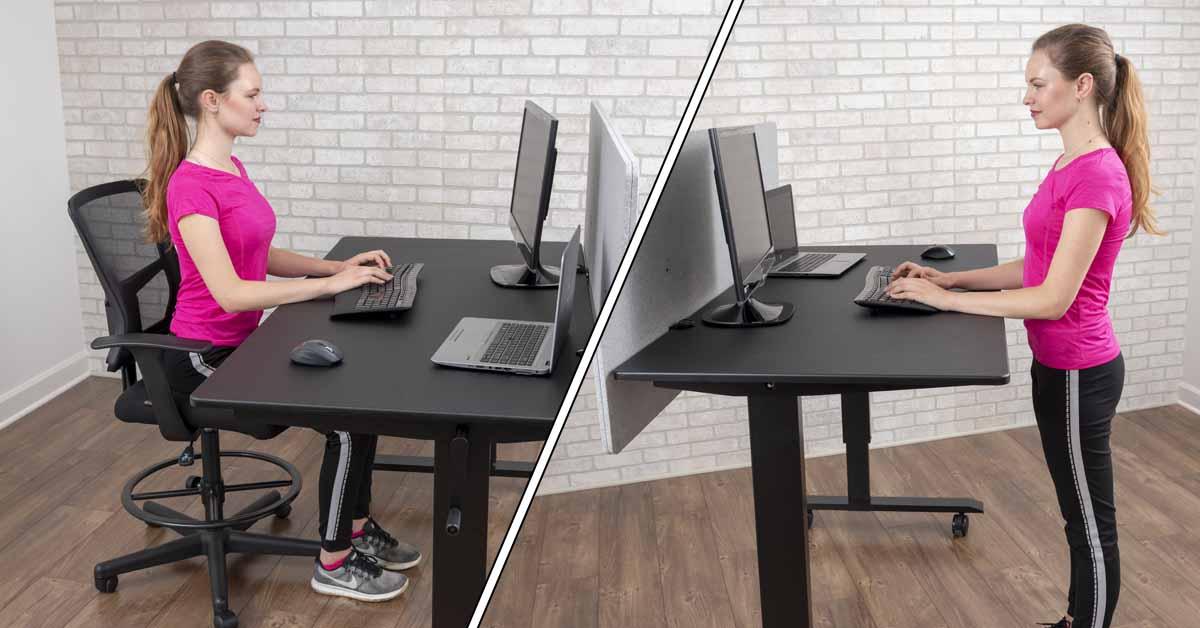
Office workers spend the majority of their day sitting down at a desk and for the longest time, this has been accepted as the way it has to be. However, in more recent years, the damage sitting for an entire workday can do to your wellbeing has been highlighted more and more, with many people striving to incorporate additional activity into their working hours. Your physical and mental wellbeing is not prioritized by sitting for the entire working day, as there is a lack of energy being used. This sedentary lifestyle can increase the risk of multiple health conditions, such as back pain, diabetes, obesity, high blood pressure, and even higher risk of cancer and cardiovascular disease. Thus, carving out more time in your daily life to be on your feet is something that is being encouraged when working in an office, to boost your physical wellbeing and reduce any risk of damage to your health.
With this new surge of standing desks and a more active office life comes a move away from sitting too long; however, a drastic shift to standing for a whole day is not the answer and may cause problems of its own. Therefore, a balance must be met between the two, which begs the question you may be asking yourself: what is the ideal ratio between sitting and standing in the office? This has been the center of many studies in recent years, with the majority concluding that in theory, the best sitting to standing ratio would be 1:3. This means that for every hour you spend in an office chair, you should be standing for three to avoid any negative side effects caused by sitting. Standing can provoke many improvements to your health, such as alleviating problems with your posture, metabolism, and back pain as well as helping tone your stomach and build up the muscles in your feet, ankles, and legs. Hence, more time spent standing generally promotes a healthier lifestyle than sitting in a chair all day.
Of course, some chairs are better than others like a big and tall office chair with a tall backrest is much better than one with a low backrest. If you do need to sit for a long time, getting a good ergonomic chair is important. In recent years, as more and more people have become aware of the problems associated with hours spent seated, there has been a rise in popularity of the standing desk and choosing to introduce more standing time into the office lifestyle. By taking the 1:3 ratio into account, this could only be seen as a good thing, however when it comes to personal circumstances, can there really be a one size fits all user manual for office work?
The short answer to this is no, which is shown through a study by the University of Waterloo which stated that the ratio is between 1:1 and 1:3, giving room for adjustments depending on the individual. Modifying your routine from the somewhat sedentary lifestyle of an office worker to incorporating more activity and movement won’t happen as quickly for some as it will for others, and it is important for it to be sustainable and comfortable as well as healthy. There are many things that must be taken into consideration individually which cannot be shown as part of one simple ratio, such as health conditions, age, and fitness level. All of these things could have a massive influence on the length of time you are able to stand up for. Thus, the initial goal may not be to stand for three whole hours at a time, but rather simply include slightly more standing time when doing office work which can increase over time.
The key is to change your routine at your own pace, and if this means short bouts of twenty minutes standing every couple of hours then that’s better than the seated alternative. Every little count and it’s important to not only test your limits to see how far you can go, but also to recognize when your body needs a break, and if it does then take a seat. Building up your amount of standing time before eventually reaching that ratio is better than not trying to at all. Hence, in order to enforce the best sitting to standing ratio of 1:3 into office culture for good, a level of understanding and patience must always be prioritized, so that everyone feels enthused to try and can work towards a healthier version of themselves.
Also read about:
Enjoy the Stunning View of Singapore From These Hotels
Use E Gift Cards to promote your company in new and innovative ways
All About the Prepaid Mastercard Going Digital in Australia










